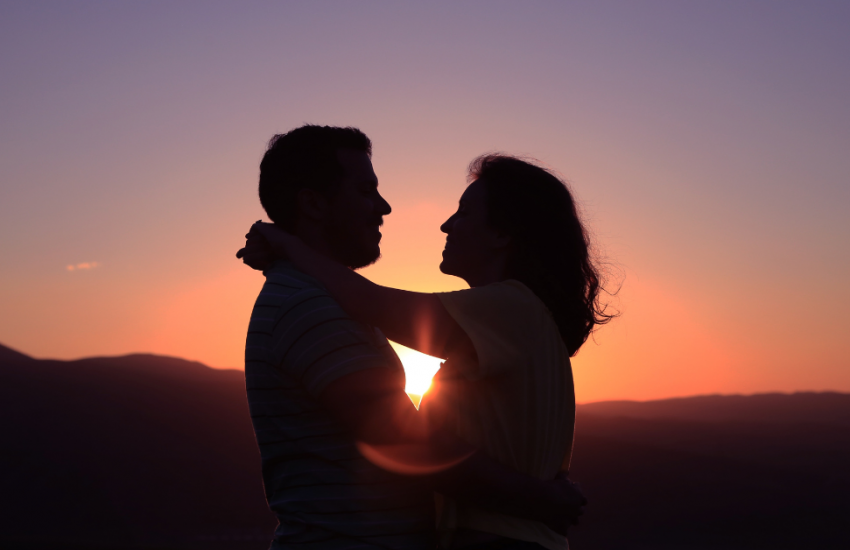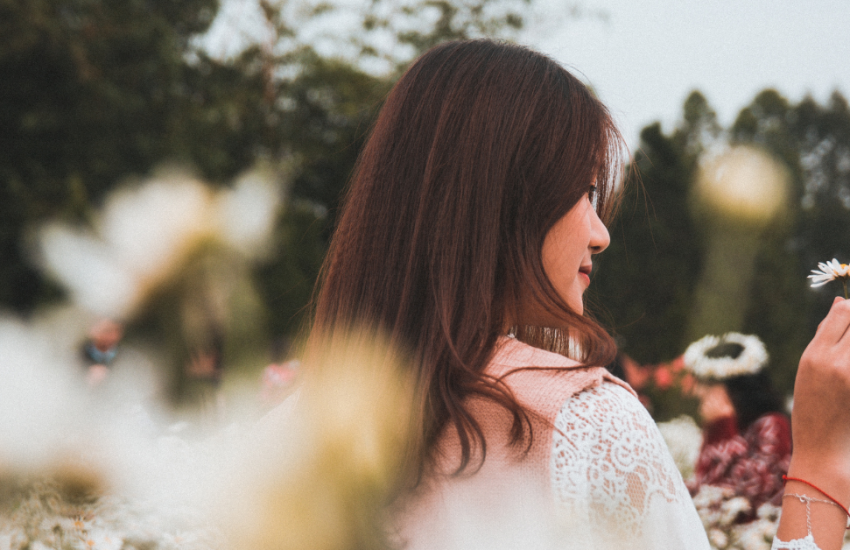It’s Not Just the Mind: What Does Anxiety Feel Like Physically?
We often think of anxiety as a thought or feeling. What anxiety feels like physically is therefore explored much less frequently.
So, let’s use our time wisely and explore ways anxiety shows up in our body.
I have personally experienced anxiety in different degrees. As a fortunate consequence, I practiced meditation and mindfulness to discover my physical signs to give you an accurate depiction of the physical signs of anxiety.
I’m sure you’ll have some aha moments and relate to others.
Overall, you should have an easier time identifying your physical anxiety symptoms after reading. This will allow you to become more conscious of them, and ultimately welcome more peace into your life. You deserve that!
What does anxiety feel like physically?
Let’s first ask…
What is anxiety?
Anxiety is caused by a combination of feelings such as worry, fear and uneasiness.
The mental and physical signs of anxiety are highly connected. So when you think anxious thoughts they often show up in places around your body.
If you are a Highly Sensitive Person (HSP), neurodivergent, or someone who feels and thinks deeply, you’re likely to feel anxious often due to way your brain is naturally wired.
Your thought process and emotional world run deeper than they do for others. It’s a blessing and a curse (I like to focus more on the former, being a HSP myself).
You therefore likely have many physical symptoms of anxiety but are simply unaware of them. Let’s change that.
What causes anxiety?
Anxiety happens in anticipation of a nerve racking situation. Understandably so, seeing as we humans tend to forecast worst-case scenarios quickly. That’s anxiety in the simplest sense i.e normal anxiety.
Most people who experience anxiety simply want things to play out well. However, it’s the overthinking and over analyzing of a future situation that triggers anxiety and our fight or flight response, which once habitual, can be hard to deter.
Interviews, large social events, phobias and driving are hallmark situations for anxiety. Can you relate?
Moreover, anxiety can escalate when we put pressure on ourselves or succumb to the opinions of others to act a particular way that’s not true to ourselves. Essentially, forcing things rather than letting them occur naturally, which causes strain on the psyche (even if it’s unintentional).
We can also get anxious about being anxious (*facepalm). This happens when you anticipate your anxiety. So, instead of being kind to yourself and adopting self-care techniques, you try to force your anxiety symptoms away which creates anxiety in itself.
Anxiety can also be a consequence of trauma such as childhood emotional neglect, the loss of a family member, bullying etc.
Ultimately, anxiety feels like a sense of pressure and uncontrollability that can be caused by many different things in life.
When anxiety is excessive, it’s considered a Generalised Anxiety Disorder.
A GAD is when you experience uncontrollable worries and fears. You feel overwhelmed by anxious feelings which affect your ability to complete daily activities or influence you to avoid them altogether.
Mental Health UK identifies 9 types of anxiety disorders:
- Generalised anxiety disorder
- Panic disorder
- Social anxiety disorder
- Health anxiety
- Phobias
- Agoraphobia
- Obsessive-compulsive disorder (OCD)
- Skin picking
- Hair pulling
- Post-traumatic stress disorder (PTSP)
Normal Anxiety Vs Generalised Anxiety Disorder (GAD)

According to ADAA, around 40 million people in the US have an anxiety disorder. However, most of them go without treatment.
Best case scenario, they manage anxiety outside of the pharmaceutical or psychotherapy industries with holistic techniques.
I personally prefer the holistic approach to anxiety to encourage lasting results to the psyche.
Nonetheless, GAD is more common than many believe.
It’s normal to have good and bad days with GAD. Factors such as the amount of rest and stress experienced can determine the amount of anxiety felt in a given day.
Moreover, most people with anxiety lie somewhere between normal anxiety and a Generalised Anxiety Disorder. It’s important to remember that everyone experiences anxiety differently.
What does anxiety feel like physically?
Heart beating out of your chest
We’ve all been there. Someone you don’t want to talk to walks in your direction or you’re sat in a waiting room before an interview. You know—the types of situations that make you feel tense and nervous.
It’s as if your heart takes on a mind of its own and gallops like a wild horse.
For many, this is one of the most obvious signs of anxiety, and makes anxiety feel like no walk in the park, but a frantic panic run through the park.
Can’t catch your breath
You are suddenly unable to take a normal breath. It’s like God zapped half the oxygen out of your tank. You hyperventilate.
Your breathing becomes shallow and quick, causing carbon dioxide to decrease in your blood stream, which can make you feel lightheaded or not-with-it.
Fear and dread
Underlying feelings drive anxiety. A big one is fear. The fear of messing up, embarrassing yourself, or on a broader scope, the fear of missing out or not achieving enough in life.
This sense of fear and dread is a key motivator for GAD because it’s a hard to subdue because of deep seated beliefs about oneself. It can therefore continue for days, weeks, and even months at a time.
The main culprit is the fight-or-flight response which is triggered when we’re highly stressed or due to past trauma.
Harvard University describes fight or flight as:
“a survival mechanism, enabling people and other mammals to react quickly to life-threatening situations. The carefully orchestrated yet near-instantaneous sequence of hormonal changes and physiological responses helps someone to fight the threat off or flee to safety.“
Our fight-or-flight response has evolved and now activates in non-life-threatening situations. For example, running late for work or sitting in traffic. Too much stress creates anxiety and walla… the fight-or-flight response.
What does fear feel like? Fear feels like a tight knot in your stomach or chest. At its worst, this knot makes you feel nauseous or causes you to vomit.
You may also find your eyes widening and the corners of your mouth turning downwards when fearful.
Tight chest
Others experience chest pressure. This is due to tension caused by anxiety and can also be a sign of bad posture.
You may subconsciously squeeze your chest and heart space when you feel down or vulnerable. It’s a protective tactic. Again, caused by the fight-or-flight response.
Your shoulders will rise and you may avoid eye contact or find your gaze often turned to the floor.
Curled toes
It’s like your toes are hanging on for dear life. But they’re trying to grasp the floor. Which, you know, is near impossible.
Curled toes are often overlooked for the more common anxiety symptom of grasped hands.
Sweaty palms
Sweaty palms. Hmm… so great when you’re driving or about to shake someone’s hand.
I used to be a nervous driver with sweaty hands. I planned routes carefully. Sat in a certain position. Wore the ‘right’ shoes. This was situational anxiety mixed with OCD. So, I can completely relate if you have experienced something similar.
An adrenaline rush–also known as the fight-or-flight hormone (brilliant, that thing again)–is the cause of sweatiness, and makes anxiety feel like an unwanted visit to the sauna.
Your temperature rises and your body reacts by trying to cool you down. Thus, you perspire.
Your hands and other parts of your body may not drip with sweat but be noticeably damp.
The hands, armpits, back, and forehead are the most sweat-prone areas of the body when anxious.
You may also find that the crown of your head heats up. An unplanned head scratch may follow.
Turning red
Blushing is another side effect of an adrenaline rush, which is triggered in fear-inducing, embarrasing and exciting situations.
Blushing can also appear as a red rash on the top of your hands, or your hands turn completely red.
Headaches
Do you have a headache which never seems to go away? You’re not alone. Tension forms in the muscles of the head and face due to prolonged periods of worry, anxiety and stress.
For many, it’s a constant pressure. And at its worst—due to high-stress situations such as a big change in life or a GAD—a headache can turn into a migraine which is more painful and can cause pressure around the eyes.
Headaches can also make you feel dizzy and tired, especially if your anxiety affects your sleep.
If you’d like to discover how meditation helps with stress and anxiety relief, you can read my blog here.
Massage guns can also help greatly at directly relieving the physical symptoms of anxiety and stress. Discover some great choices, here.
I hope this blog has helped you discover the answer to ‘what does anxiety feel like physically?’
Please share on socials to spread the message, and follow me for daily doses of personal and spiritual growth and anxiety related content (Also, my journey, because I want you to know you’re not alone):
Subscribe to my newsletter below.


